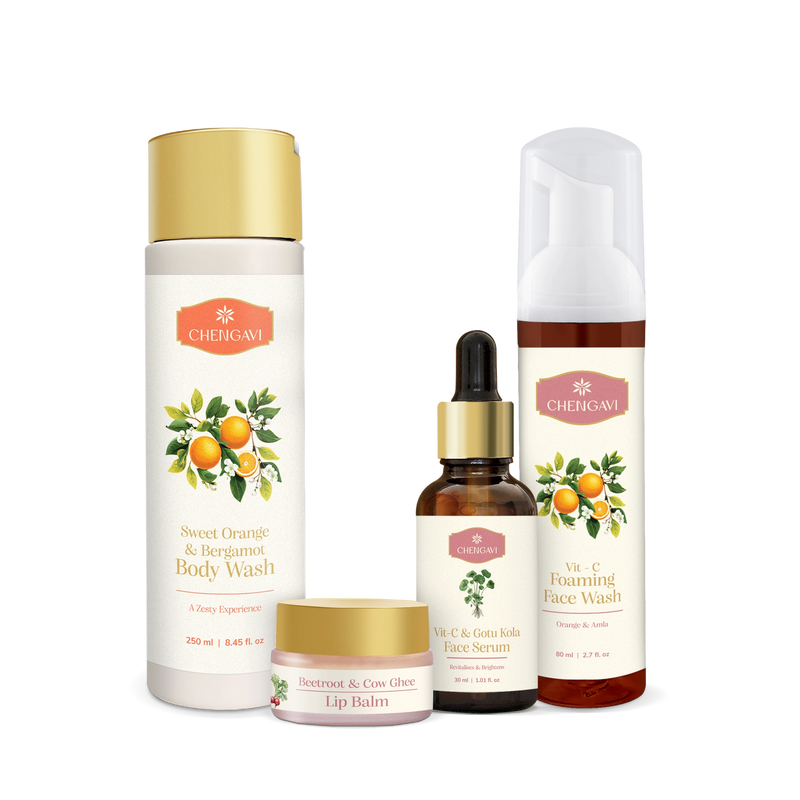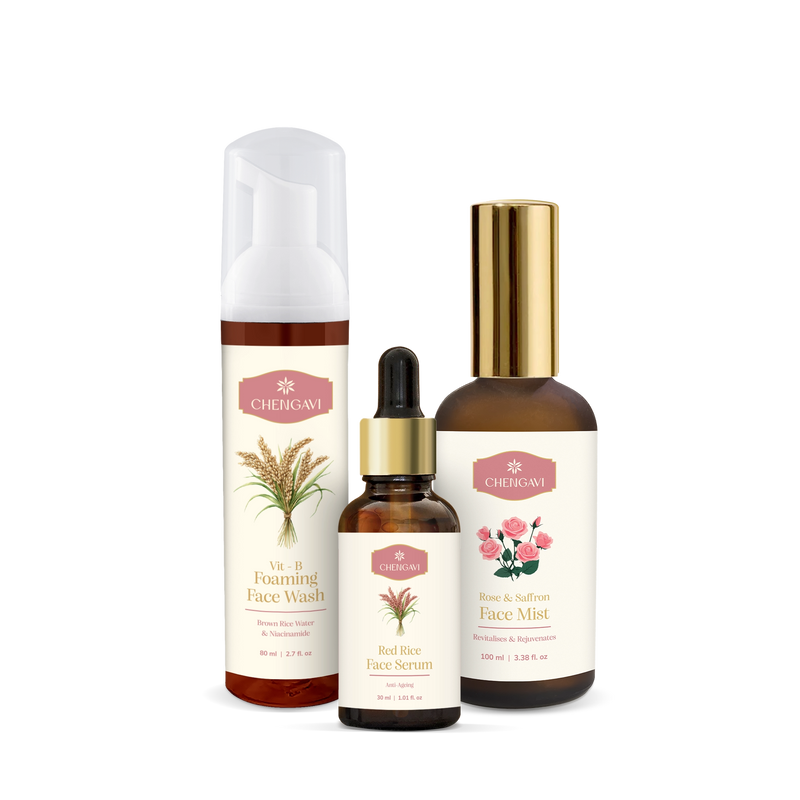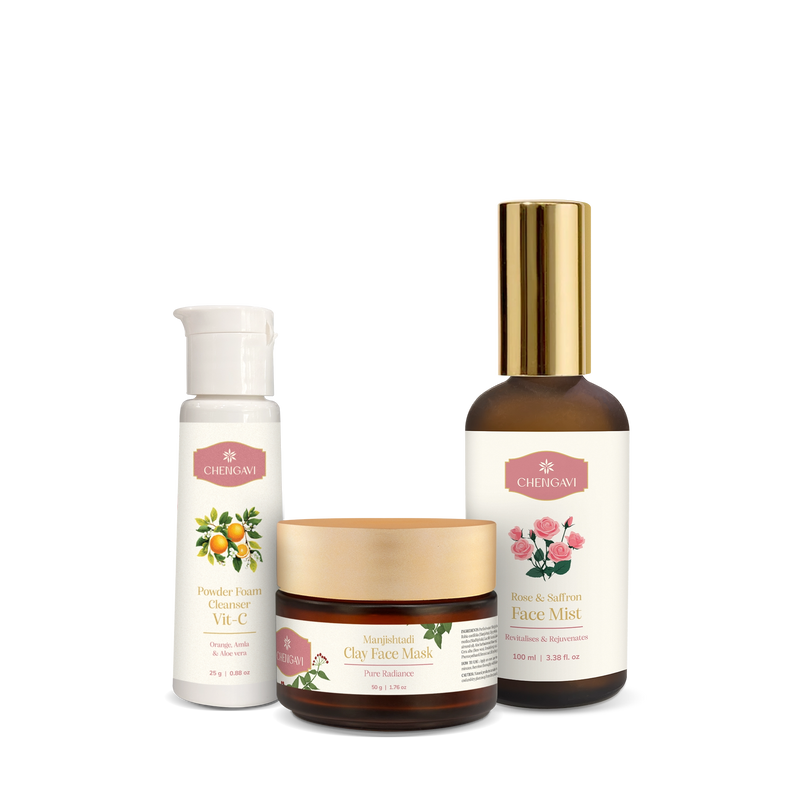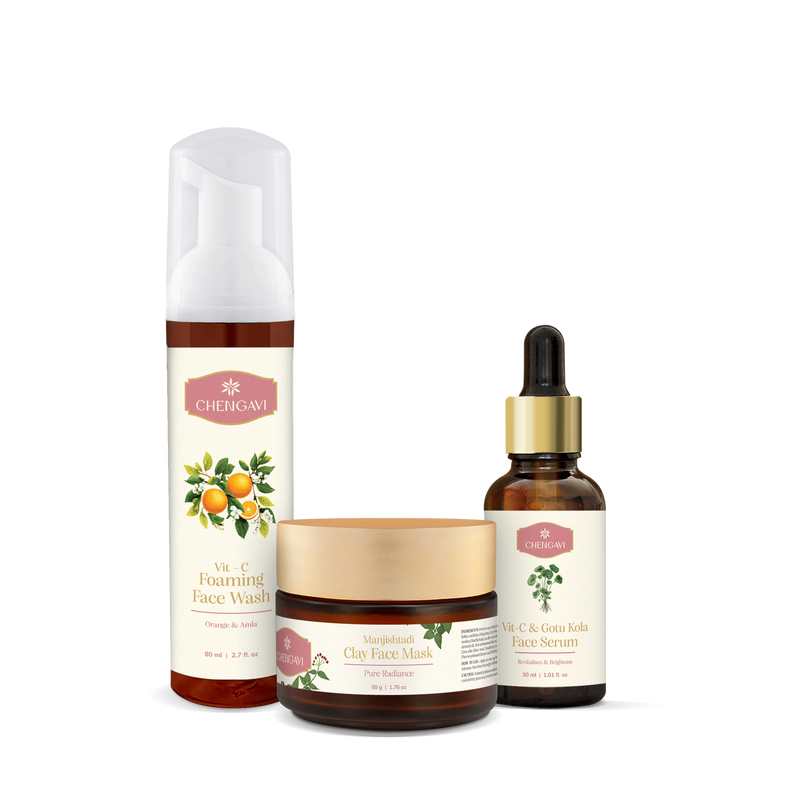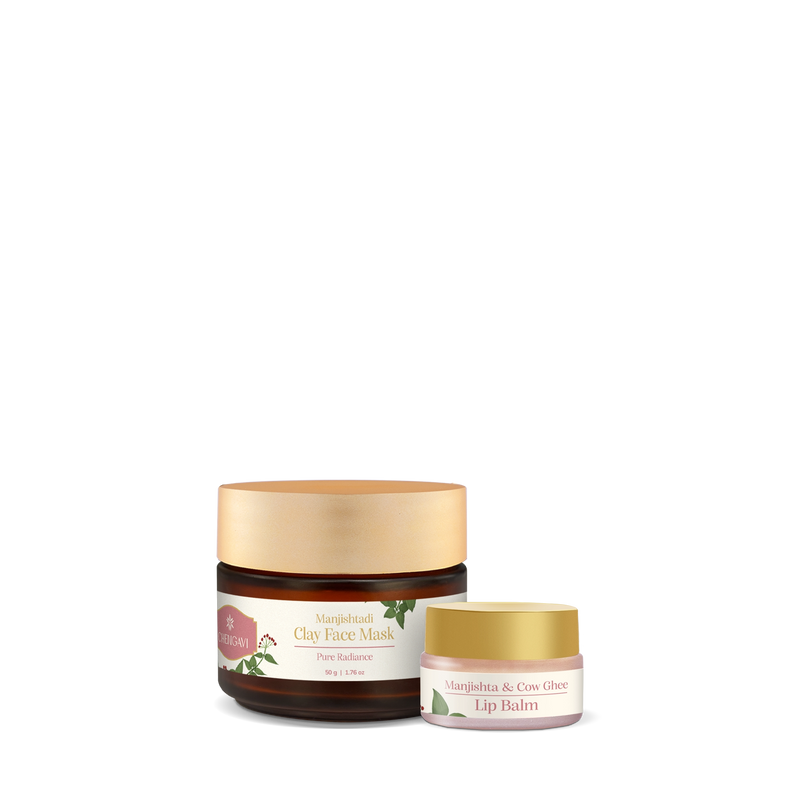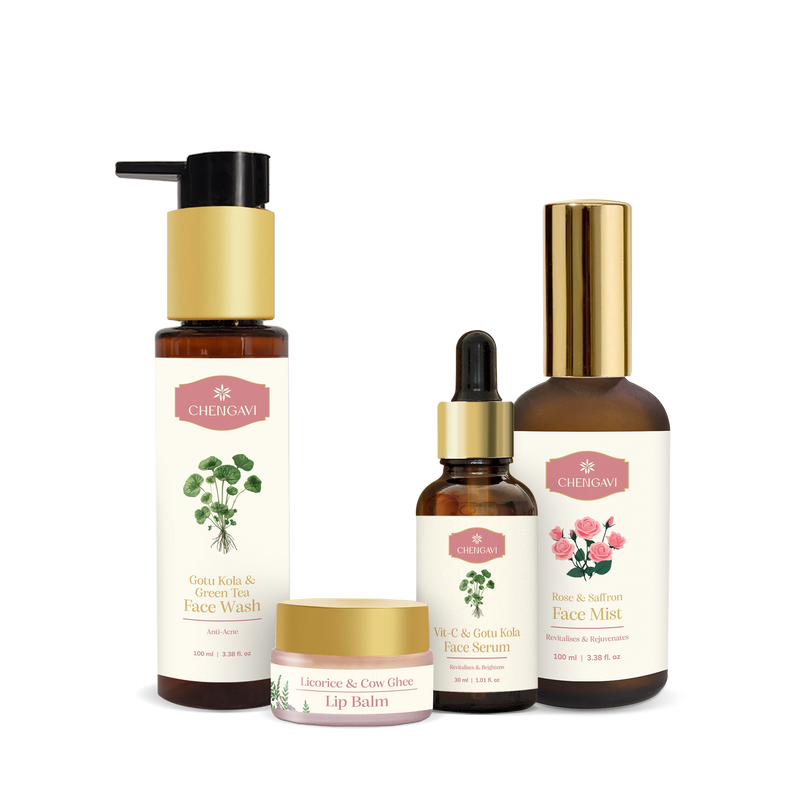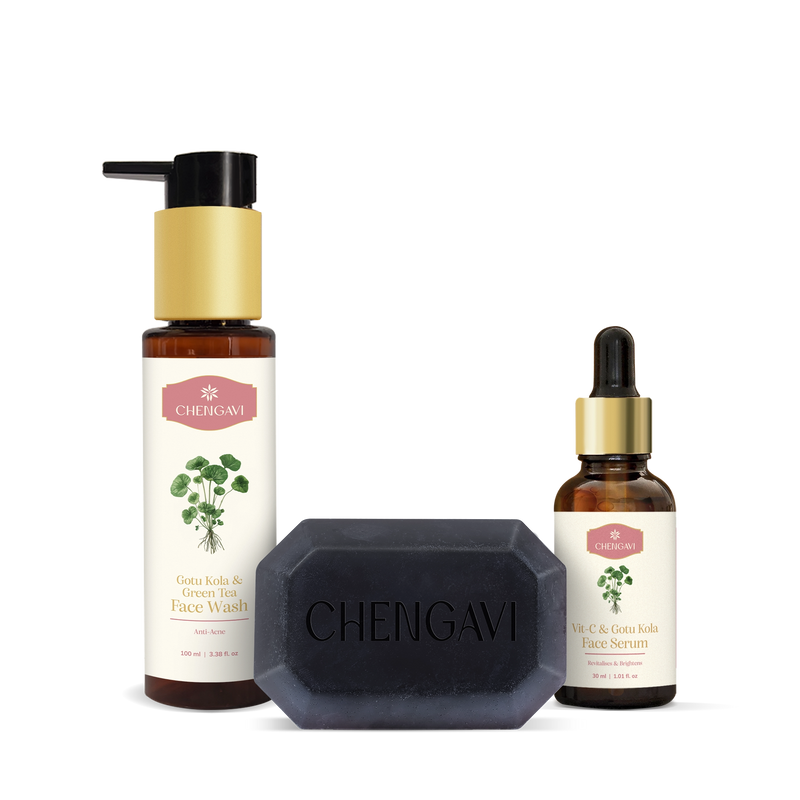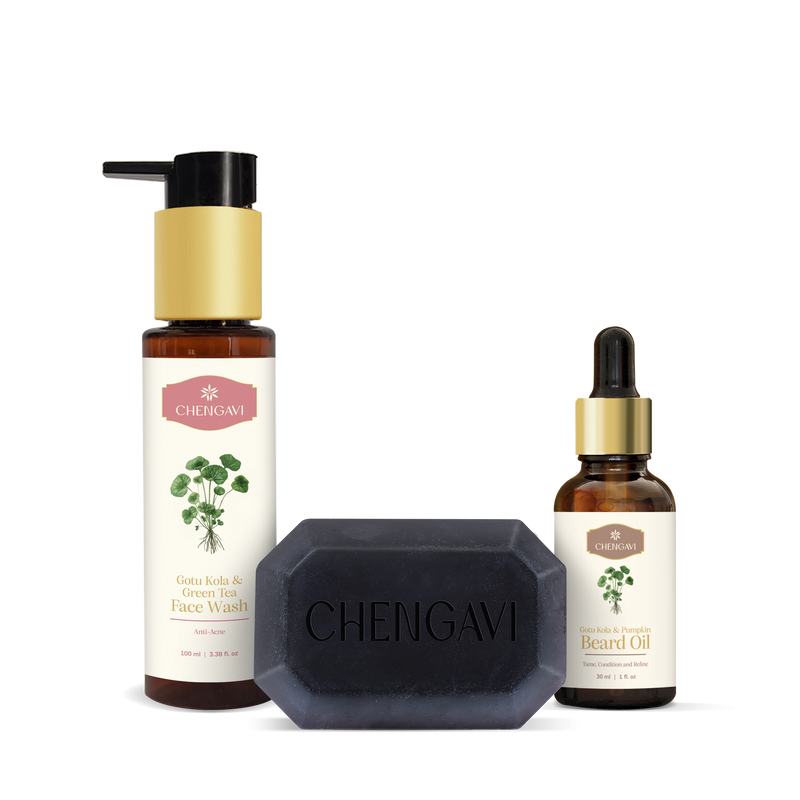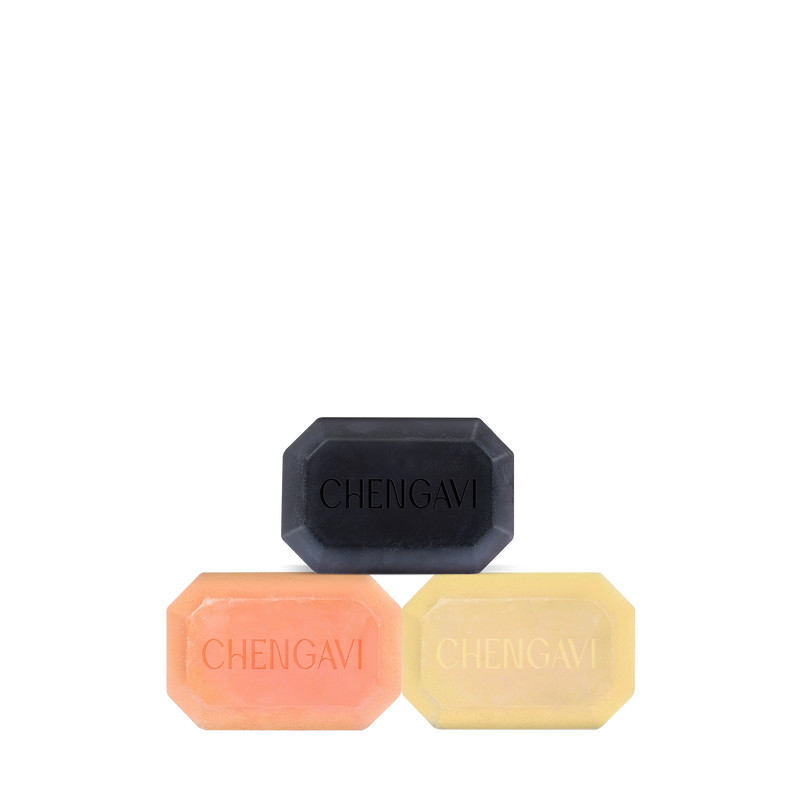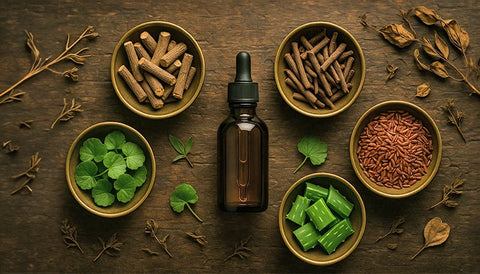
Skincare trends come and go, but have you noticed how the best ones often circle back to nature?
Today, innovation dominates the beauty world.
From serums packed with cutting-edge ingredients to streamlined, no-fuss routines—there’s no shortage of options.
But here’s a twist: the most promising skincare trend isn’t new.
It’s 5,000 years old.
Yes, we’re talking about Ayurveda—a time-honored system of wellness that’s now stepping confidently into the modern skincare spotlight.
It’s not just nostalgia driving this resurgence. It’s backed by modern science, driven by sustainability, and sprinkled with the kind of magic that only ancient wisdom can offer.
Ingredients Evolved: From the Kitchen to the Lab
Do you remember your grandmother’s go-to skincare fix—a turmeric paste for just about everything?
Now, turmeric is being transformed using advanced technology.
Its powerful compound, curcumin, is broken into tiny particles through a process called nano-encapsulation. This allows it to penetrate deeper into your skin, making it more effective than ever.
What was once a kitchen staple is now a high-tech ingredient.
And it’s not just turmeric getting a 21st-century makeover:
● Curd - A natural moisturizer, is now refined into probiotic-infused creams to maintain your skin’s microbiome health.
● Coconut Oil - Once a go-to remedy for dry scalp massages, is now a key element in moisturizing skin care products.
● Banana Peels - Once discarded without thought, are now celebrated in exfoliating masks for their natural skin-brightening enzymes.
● Cucumber - Known for its cooling properties, has evolved into hydrating serums and under-eye gels.
● Papaya - Previously used as a quick DIY mask, is now a hero ingredient in gentle exfoliators and blemish-fighting creams.
● Aloe vera - Used as a quick remedy for burns, is now stabilized and incorporated into gels that deliver long-lasting hydration.
This evolution shows how Ayurveda adapts without losing its essence—offering wisdom that’s as effective today just as it was centuries ago.
Beauty in Balance: Ayurveda’s True Legacy
Ayurveda has never been about chasing impossible beauty standards.
Its philosophy is simple: Balance equals Beauty.
Modern science often views beauty as external—a flawless face or perfect complexion. But in Ayurveda, beauty is holistic.
It’s about having a healthy gut, balanced doshas, and harmony within your body. A glowing face is simply a reflection of a well-balanced self.
Take the Ayurvedic dosha system as an example:
- Vata (dry skin): Benefits from hydrating oils like sesame and soothing ingredients like aloe vera.
- Pitta (sensitive skin): Finds relief with cooling agents like rose and sandalwood.
- Kapha (oily skin): Thrives with detoxifying herbs such as neem and turmeric.
Unlike modern skincare, which often focuses on symptoms—like prescribing pills for acne or using harsh chemical peels for pigmentation—Ayurveda looks deeper. It doesn’t just treat the skin’s surface but focuses on balancing the body’s internal systems.
For example, if acne is caused by hormonal imbalances, Ayurveda recommends herbs like shatavari to balance hormones, alongside neem to combat bacterial infections. Similarly, if dry skin stems from dehydration, it emphasizes drinking warm herbal teas and using oils like sesame to nourish the skin from within.
Ayurveda also recognizes the importance of mental health in achieving beauty. Stress, after all, shows up on your skin.
Practices like yoga, meditation, and abhyanga (self-massage) are integral to its approach, creating a holistic path to beauty that feels as good as it looks.
Ayurveda: The Original Clean Beauty
Modern clean beauty prides itself on being paraben-free, sulphate-free, and toxin-free—a movement that feels fresh and innovative.
But Ayurveda has been practicing this for centuries.
For Ayurveda, “clean” isn’t a trend; it’s a tradition. Its recipes are toxin-free, long before these terms became marketing buzzwords.
Let’s break it down:
1. Ingredient Simplicity: Ayurvedic formulations are based on simple impactful ingredient combinations. Neem, turmeric, sandalwood, and rose are staples, each chosen for its ability to nourish, heal, and protect the skin. There’s no need for long lists of synthetic chemicals when nature provides everything.
2. Toxin-Free Formulas: While modern beauty brands pride themselves on being free from harmful chemicals like parabens and sulphates, Ayurveda never used these to begin with. Its focus has always been on purity, using natural oils, herbs, and plant-based preservatives to ensure the skin is treated with care.
3. Eco-Friendly Practices: Sustainability is another hallmark of Ayurvedic beauty. Ingredients are sourced responsibly, and traditional methods of preparation emphasize minimal waste.
It’s clean beauty in its truest sense!
What makes Ayurveda even more impressive is its holistic approach to “clean.” It’s not just about avoiding toxins in skincare but also in diet and lifestyle.
After all, what you put into your body matters just as much as what you put on it.
Why Ayurveda Feels Personal
Have you ever felt like your skincare products just don’t understand your skin?
That’s where Ayurveda shines.
By recognizing the unique needs of every individual through the dosha system, Ayurveda creates solutions that feel tailor-made.
Unlike modern science, which often prescribes generic solutions, Ayurveda believes what works for one might not work for another.
For example:
Modern skincare might put you on acne pills, focusing solely on symptoms. Ayurveda, however, works on balancing doshas, using herbs like turmeric for detoxification and neem for antibacterial care, while also addressing the root cause—whether it’s a poor diet, stress, or hormonal imbalance.
Instead of adapting to your products, your products adapt to you.
Why Ayurveda Matters
This isn’t just a trend.
Ayurveda’s resurgence reflects what today’s consumers truly value: authenticity, safety, and sustainability.
By merging ancient wisdom with modern science, Ayurveda is proving that the solutions of the past still hold the power to shape the future.
Because sometimes, the best path forward is the one that’s rooted in tradition and tested by time.
Tradition Meets Modern Technology
Technology has elevated Ayurveda by addressing its traditional limitations.
In the past, Ayurvedic ingredients were often difficult to store and lost their potency quickly. Modern advancements like airtight packaging and bio-fermentation have solved these issues, making Ayurvedic products more efficient and accessible to today’s consumers.
For instance, nano-encapsulation enhances the potency and shelf life of herbs like turmeric and neem, ensuring deeper skin penetration and longer-lasting benefits.
Even the way we consume Ayurveda has changed. Herbal powders and oils have been reimagined into capsules, serums, and creams, allowing for easier integration into modern lifestyles.
By solving issues like spoilage and inefficiency, technology has made Ayurveda more accessible, effective, and modern. It’s a seamless blend of ancient wisdom and innovative advancements.
With innovation breathing new life into ancient practices, Ayurveda is not just preserving its soul but redefining its relevance for the future.
FAQs About Ayurvedic Skincare
1. Is Ayurvedic skincare suitable for sensitive skin?
— Yes! Its dosha-based approach ensures calming ingredients like aloe vera and rose address sensitivity with care.
2. Can Ayurvedic products replace modern skincare?
— Not necessarily—but they complement it beautifully, offering a holistic approach alongside targeted solutions.
3. Are Ayurvedic products safe for all skin types?
— Absolutely. Just ensure you choose products aligned with your dosha and perform a patch test.
4. How long does it take to see results?
— Ayurveda focuses on long-term health, so consistency is key. Visible changes may take a few weeks.
5. Do Ayurvedic products use preservatives?
— Many modern brands use safe, natural preservatives to maintain product integrity without compromising on purity.
